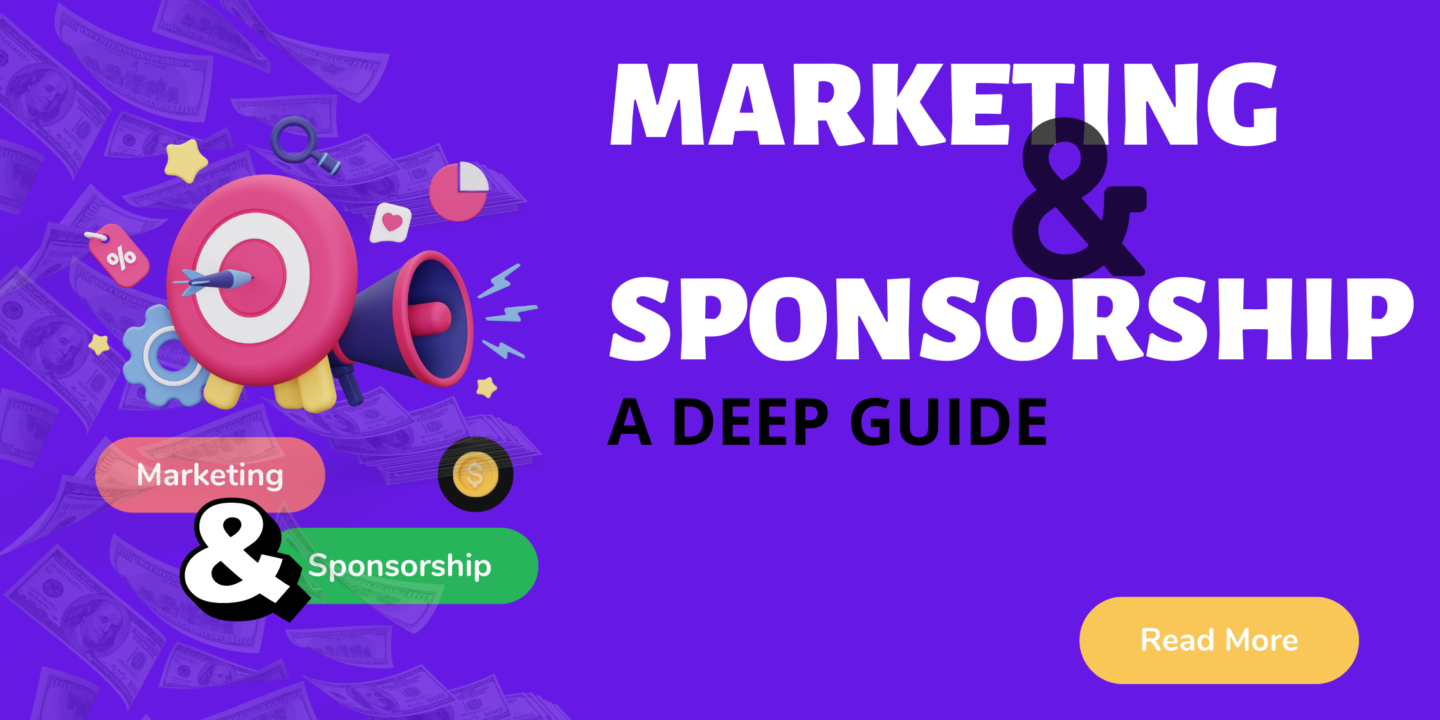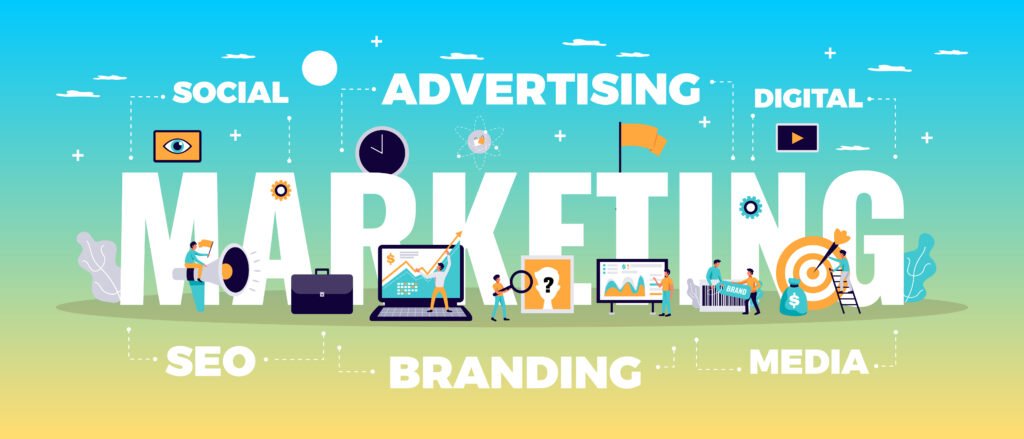
If you’re curious about how to calibrate marketing & sponsorship for your company’s events, this article is for you. We’ll explore the different types of sponsorships, what goes into calculating a fair price for them, and how to structure a sponsorship proposal that works for both parties involved. By the end of this article, you’ll understand how to create a win-win situation for your company and potential sponsors.
How Marketing & Sponsorship Cross Paths?
- Marketing & sponsorships are two of the most important aspects of any business. Marketing involves establishing a connection or relationship with customers and potential customers, while sponsorship is the process of financially supporting a company or individual.
- Marketing & sponsorship are closely related, as both involve exchanging money for exposure.
- Marketing typically involves exchanging money for advertising, while sponsorship usually involves exchanging money for some endorsement.
Marketing & sponsorship are essential tools to help a company reach its goals. In many cases, companies will use both marketing & sponsorship to reach their target audiences. For example, a company might sponsor a sports team to get its name in front of potential customers interested in sports. At the same time, the company might also run television or radio ads to reach a wider audience.
What Is Marketing?

- Developing and disseminating products or services contribute to a company’s value generation, defining the essence of marketing. It is also the process of communicating the value of those products or services to customers to persuade them to purchase them.
- Marketing may also promote a company’s image or generate sales leads. Marketing can be done through various channels, such as advertising, public relations, sponsorship, or by creating and distributing popular content with potential customers.
- Marketing is an essential part of any business, and it should be strategic and tailored to the target audience’s needs. Marketing involves comprehending the needs and wants of customers and developing a distinctive offering tailored to meet those requirements.
- Marketing also involves creating a relationship with customers that encourages them to return for more products or services. Marketing is essential to any business because it helps companies reach their potential customers and create value for the business.
- Marketing is an essential function in any company and should be given the attention it deserves. Marketing need not be expensive, but it should be given the time and resources it needs to be effective.
- Marketing should be strategic, creative, and tailored to the target audience’s needs. Marketing is essential to any business because it helps companies identify opportunities, reach their target market, build relationships, and create value for the business.
- Marketing is essential in any company because it helps businesses reach their potential customers by creating unique offerings that meet customer needs.
- Marketing should be given the attention it deserves because it can help businesses identify opportunities and build value relationships. Marketing can help companies reach their target markets by building relationships and providing unique offerings that appeal to customer desires.
- Marketing can also help businesses keep their current customers by maintaining communication and providing valuable offers. Marketing should be considered a tool for businesses because it can provide significant benefits that help a business reach its potential.
Types Of Marketing
There are a variety of marketing tactics and approaches that companies can utilize to engage with their intended audience.
Some common marketing tactics include:
- Promoting via conventional media channels like TV, radio, and print
- Engaging in digital marketing across platforms like social media search engine optimization and email marketing
- Conducting public relations initiatives, including press releases and media events
- Event marketing through sponsorships or hosting events
- Content marketing using blogs, videos, and other forms of educational content to engage customers
More Reads – 12 Types Of Content Marketing You Can Use In 2023
– 12 Types Of Email Marketing Campaigns You Should Be Using–
A Beginner Guide To Types Of Social Media Marketing
Each marketing tactic can effectively reach a specific audience or achieve certain marketing goals. Companies must assess their target audience and marketing objectives before choosing the right marketing tactics.
How To Strategies Event Marketing Campaign?
- Businesses should define their marketing objectives and target audience to strategize an event marketing campaign effectively. They should research potential events to sponsor or host that align with their goals and target audience.
- Once a specific event is chosen, businesses should plan out marketing tactics, such as promoting through social media or contacting media outlets for potential press coverage.
- It is also essential to plan how the event will measure success, such as tracking sales leads or social media engagement.
- Businesses can effectively attain their marketing goals by meticulously strategizing and implementing marketing tactics for events.
Don’t forget about the power of sponsorships! Partnering with a relevant brand or organization can enhance marketing efforts and reach a wider audience. Choosing a sponsorship partner that aligns with the company’s values and target audience is essential.
Structure Of Marketing For The Event
- When creating a marketing plan for an event, it is essential to have a clear structure and goals in place. This includes defining the event’s target audience and marketing objectives, outlining specific tactics, and measuring success.
- It is also crucial to allocate resources and budget appropriately for marketing efforts.
- A structured plan helps ensure that marketing efforts are focused and effective in reaching the event’s target audience and achieving marketing objectives.
Overall, marketing & sponsorship can be powerful tools for businesses to reach their target audience and achieve marketing goals. Businesses can effectively utilize marketing & sponsorship to enhance their marketing efforts and drive success. It is essential for businesses to strategically plan marketing tactics and consider partnerships that align with their values and target audience.
What Is Sponsorship?
Sponsorship involves a company or individual financially supporting an event in exchange for exposure and marketing opportunities. This can range from displaying their logo at the event to interacting with attendees and showcasing their products or services.
Types Of Sponsorships
There are four main types of sponsorships:
Product Sponsorship
- Product sponsorships are when a company provides products or services to be used at an event in exchange for branding and marketing opportunities.
- Regarding product sponsorships, companies provide products or services to be used. This effective marketing strategy can help promote a company’s brand. It is also an excellent way to build relationships with potential customers.
Cash Sponsorship

Cash sponsorships are direct monetary donations that can be used at the discretion of the organization or individual receiving them. These funds can help cover events, programs, or general operating expenses.
In-Kind Sponsorship
- In-kind sponsorships are non-cash donations in the form of goods or services.
- In one sense, in-kind sponsorships are non-cash donations. But there’s more to it than that. These donations take the form of goods or services, which can be incredibly helpful to organizations that need them.
Cause-Related Sponsorship
- People are more likely to support a cause if they feel a personal connection. That’s why cause-related sponsorship is such an effective marketing tool.
- When a company sponsors a cause, it supports a good cause and increases its brand awareness. This helps them to reach new audiences and promote their brand values.
- Cause-related sponsorship is a win-win for both the organization and the cause itself. It can help raise awareness and funds for a worthwhile cause while providing tangible benefits for the sponsoring company.
Calculating Sponsorship Prices
When calculating how much to charge for sponsorship, there are a few factors to consider.
- First, you’ll need to consider what benefits you’re offering the sponsor. These benefits include but are not limited to branding and marketing opportunities, access to attendees, hospitality perks, and more.
- Second, you must research comparable sponsorship deals to understand industry norms.
- Finally, you’ll need to consider your company’s budget and what you’re comfortable charging.
Structuring A Sponsorship Proposal
Once you’ve decided on a price for your sponsorship package, it’s time to start drafting your proposal.
- The first step is to introduce your company and explain what you do.
- Next, you’ll want to give an overview of the event and explain why it would benefit the sponsor to get involved.
- After that, you’ll detail what benefits the sponsor will receive in exchange for their investment.
- Finally, you’ll include information on how they can contact you to finalize the deal.
Conclusion
Marketing & sponsorship go hand-in-hand when it comes to events. By taking the time to calibrate your approach correctly, you can ensure that everyone involved walks away happy. Remember the tips from this article next time you’re putting together a sponsorship proposal—and don’t forget to practice your negotiation skills! With some preparation, you’ll be sure to land some great deals.
Marketing can effectively grow your business if you give it the attention it deserves and ensure you are strategic in its execution. If you have a marketing plan but need help executing it, consider hiring a marketing agency or consultant to assist you in developing your strategy and implementing it effectively, but you should have the sponsors first.
After generating a road map, you can also onboard a marketing agency; you can go for the sponsorship round. Because marketing professionals can help you comprehend your target market and formulate strategies to engage with them effectively while staying within your budget, this is precisely what sponsors consider before investing.
Thanks for reading 🙂
Also, Read – Push And Pull Marketing: The Ultimate Guide In 2023
– Marketing Advice California: The Updated Guide To Get Noticed By Customers–
Which Of The Following Would Be Considered Part Of A Firm’s Marketing Mix?








No Comments